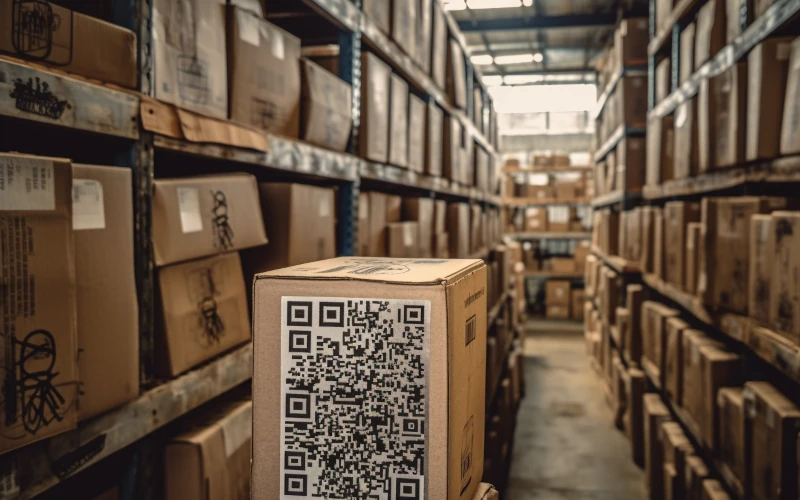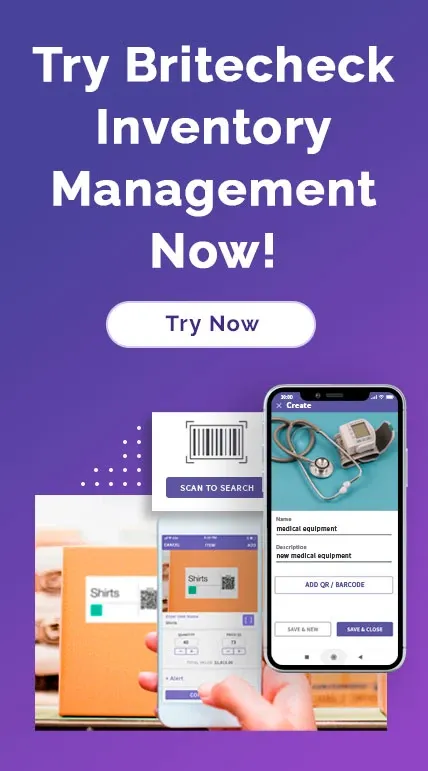This is Why Your Small Business Needs a Barcode Inventory Management System
June 22, 2023
If you are a small business owner, then you will agree that inventory is being knocked out every single day. Knowing how important inventory can be to your business can be crucial for your success. How is a barcode inventory management system of any benefit to your company?
You're a small business owner with a million things on your mind: assembling a clientele, keeping on top of your stock… But for you, the major hurdle to harnessing digital systems to assist with those tasks lies in the cost of incorporating digital. Your lack of digital knowledge only amplifies the complexity and makes the proposition look inaccessibly costly.

Another benefit of efficiency is that when applied to small businesses, it ensures that a good small business barcode inventory system will be in effect. This is not to promise you that you will have to spend a fortune. Modern barcode inventory systems for small businesses are both reliable and not in any way an expensive undertaking, as they will save you money in the long term.
This article focuses on the advantages of barcode systems for small business and outlines the steps taken to get started. Therefore, in this article we are going to talk more about how to manage business inventory using barcoding systems for small businesses.
What are barcodes for inventory?
Every business has products in the warehouse that need tracking and easy identification for efficient operation. This is where the barcode comes into play.
Think of a barcode for inventory as a special code that gives each item in a business's inventory a unique identity. It consists of a series of parallel lines and numbers; when scanned, the details, like the product's name, price, and quantity, are instantly linked to a digital database.
In an inventory scanning system, there are two types of barcodes. Each has its specific format and purpose.
One-dimensional
Also known as a linear barcode, a one-dimensional barcode encodes data in vertical lines and spaces that vary in width. You can find 1D barcodes on most manufactured products or shipping labels. Each SKU (Stock Keeping Unit), unique to the manufacturer, has a specific pattern. The space between the black lines of the barcode indicates the product.
As your business grows, linking barcodes to inventory becomes essential. Even the most minor differences in SKU will get detected with a unique pattern. However, while 1D barcodes are efficient for encoding simple data, they have limits regarding the amount of information they can store.
Two-dimensional
Data in a 2D barcode is written in dots and lines. What is the difference between a 2D barcode and a 1D barcode? Certainly 2D barcodes can include much more information. That's why they are well-suited for storing any kind of information, for instance: text, numbers or even image files. One of the most common 2D barcodes are QR codes. If you read them on your smartphone, you open the company details and product SKUs. A QR code can contain a link to images as well, which makes them suitable for marketing.
Benefits of Barcoding in Inventory Management
A barcode inventory management system is a set of tools that combine a barcode scanner app and some computer software for keeping track and maintaining inventory. Inventories are mostly tracked label stickers that are printed with barcodes that can be instantly scanned with a reader or any phone. What are the Benefits of Using Barcode Labels for Efficient Inventory Management?
A digital barcode system generally tracks all the product information whenever they are scanned. A good platform contains a user interface you can access through your computer device or smartphone, containing real-time reports about individual item stock logging its movement and location. Barcoding will help owners streamline their inventory management in their warehouse. Below are a few benefits to expect:
1. Useful insights
An inventory scanning system does more than counting. It provides some data that can help them identify the product growth trend. The real-time insight is crucial for small business owners that can help them make stock logistics and inventory management decisions. Through the barcode tracking management, the business can also adjust to emerging trends so that the business can continue to grow. Overall, the inventory barcode scanning management system will transition into a strategic tool.
2. Fewer errors
Perhaps he is a business owner who, when he was starting, did not think it was necessary to automate his inventory. However, in the long run, as the orders increase, the inefficiencies of manual stock-keeping become more and more apparent.
Manual stock-keeping is time-consuming and error-prone. Tracking your inventory position with spreadsheets and physical files is a sure way toward inaccurate stock counts, costly delays, inefficient resource utilization, and even losses due to inventory obsolescence.
Barcode scanning software can help automate the entire inventory journey, from when a product enters your warehouse to when you dispatch it to customers. Scanning the barcode at every stage ensures the right quantities are received, stored, moved, and dispatched. That way, you can spend less time “fire-fighting” and more strategizing on ways to grow your business.
3. Customer Retention
Providing the best customer experience is key to success for any growing business. So, the last thing you want is to run out of a product right when you need to sell. An effective barcode inventory system mitigates this risk by warning you when your stock reaches a pre-set minimum threshold. That way, you can reorder items on time and maintain healthy stock levels.
Another way to reduce order-fulfillment errors is to automate the use of your barcode system. If you use your barcode system only to record the sale, any errors in picking your shelves and packing your boxes will not be immediately obvious.
How to set up a barcode inventory system for a small business
The quality of a system such as inventory management is only as good as its set up, and the successful deployment of the software rests largely on the human comms. Unfortunately, a lot of businesses make this investment, but don't reap the benefits of implementing a stock control system they imagined because they missed some important steps during the setup process.
Learn Tips for Implementing a Successful Inventory Management System by reading this article. Here are the key steps towards a successful setup.
1. Define SKUs and UPCs
Stock-keeping units (SKUs) act as internal identifiers unique to your business, providing detailed product information. They offer flexibility for customization and can be tailored to your specific needs. Universal Product Codes (UPCs), on the other hand, are standardized universal codes recognized by any company.
A properly designed system for SKU allocations is critical because it defines how your digital inventory management system will classify products. For example, suppose you sell various types of festive decorations. In this case, you can allocate SKU numbers that start with one as balloons, two as ribbons, and three as fabrics. That way, your inventory management system can aggregate each category and give you a clear picture of the quantities in stock.
While SKUs are for internal use, the more standardized UPC system facilitates smooth product exchange and scanning at point-of-sale. With well-defined UPCs, you can ensure the items you receive from vendors are precisely the ones you need.
Properly selecting and understanding SKUs and UPCs ensures seamless integration with your barcode system and lays the foundation for accurate inventory management.
2. Determine stock levels and corresponding barcode types
Assessing your inventory and choosing a barcode that best fits your needs is important before implementing an inventory barcode system for your small business. The right barcode system will depend on your business model.
For instance, a simple 1D barcode system, often included in budget-friendly software packages, would be ideal for limited SKUs. It efficiently tracks basic product details and is perfect for smaller shops with a manageable inventory.
Meanwhile, a 2D barcode like a QR code will do for a growing business with larger, ever-changing stock. It accommodates broader product ranges and facilitates smoother integration with suppliers. Sure, 2D systems might have a higher initial purchase cost, but in the long haul they provide a rapacious return for complete, accurate and scalable data; in other words, if you choose the right inventory management system to start with, you can quickly reap the benefits of your investment.
3. Choose the right inventory scanning system
After selecting the barcode type and affixing barcodes to items, look for suitable barcode scanning software for your needs and budget.
For instance, if you're starting with simple 1D barcodes, opt for budget-friendly software with basic inventory tracking. If your business is expanding and you're using 1D and 2D codes, explore software that can generate purchase orders or handle basic sales functions.
Remember, the right software should go beyond just tracking numbers. Look for bonus features like mobile compatibility for on-the-go scanning, user-friendly interfaces, or even integrations with your existing e-commerce platform.
Barcodes for inventory work for small businesses
Nowadays, small businesses are competing with large competitors more than ever, so anything that could impede their ability to succeed needs to be addressed. Inventory control is one of the most obvious of these, and cloud inventory software is cheaper and better than it has ever been. By having the right barcode scanning system, you won't have to deal with deleterious effects of manual stock-keeping and can concentrate more on finding ways to get more sales and growing sales.
By scanning a barcode, small businesses using Britecheck's system can turn a messy, human-driven process of stock-keeping into a precise, cost-effective, customer-friendly machine.
To make your business run more effectively, introduce a simple barcode inventory system for your business.
Contact us for a quote, and see how you can improve inventory management by using the best barcode system for small businesses in the world.
